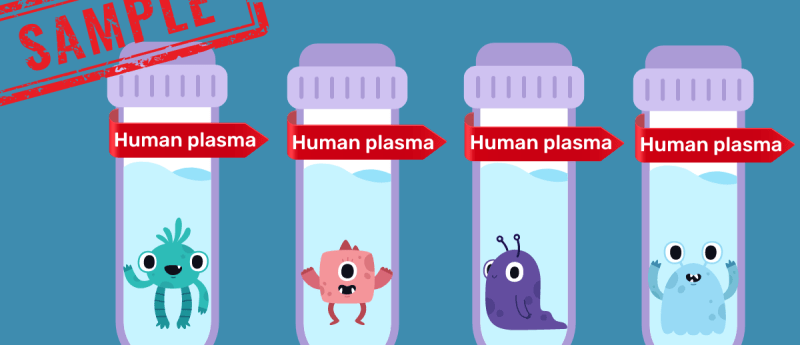A glitch in the matrix

In this column from Robert MacNeill (Pharmaron; PA, USA), he addresses matrix effect and how the two-word term can result in sharp intakes in breath, and the ability to strike fear into the heart of many a bioanalyst!

Robert MacNeill received his BSc with Honors in Chemistry from Heriot-Watt University and then his MSc in Analytical Chemistry from the University of Huddersfield, both in the UK. Robert is also a Chartered Chemist and a Fellow of the Royal Society of Chemistry. With decades of experience in all aspects of quantitative bioanalytical LC–MS method development, many of these years heading bioanalytical method development activities in the CRO domain, and a regular author and speaker, Robert is a recognized expert and innovator in the field.
In his current role, Robert is Director of Bioanalysis at Pharmaron in Exton (PA, USA). In addition to directorship duties, he coordinates the bulk of LC–MS method development, also keeps abreast of innovation and technological development in the industry, leading in-house research projects and managing the associated technical writing.
‘Welcome to the real world’ – of comprehensively addressing matrix effect.
Embracing diversity is a wonderful thing, and it also counts for underlining the strength of quantitative bioanalytical methodologies in terms of successfully encompassing the diversity of biological samples available, for a given matrix, in a given species. This pertains to the critical differential aspect of matrix effect. Yes, here we have an innocent two-word term with innumerable connotations, many of which result in sharp intakes of breath, and the ability to strike fear into the heart of many a quantitative bioanalytical LC–MS user across industry and academia.
My own coming-to-terms with matrix effect and all the nuances, really with a determined view to cementing a satisfying understanding, came around the time when the industry was generally realizing that the wonderful offering of high-end triple quadrupole-based detection did not actually negate the need for chromatography and sample preparation. There had been splendid technological advancements in making electrospray-based gas phase ion generation amenable to accepting conventional LC flow rates, but at the cost of a minuscule percentage ionic release amid a whole plethora of competition in the ion evaporation model. Especially if the chromatography is not of adequate discriminating power, or the extraction is not overly selective, resulting in the major feature of coelution with other compounds and interferences. An ubiquitous term in this domain, interferences, present natively in the biological matrix and artifactually recovered through the sample extraction procedure, absolutely key in this context of matrix effect. Such interferences are wholly accountable for the very manifestation of matrix effect, the resultant response modifications and, more potently, the sample-to-sample variability superimposed on these modifications.
The response modification aspect pertains to what has been termed ‘matrix factor’, established via straightforward numerical comparisons of peak area and ratio responses in solution versus extract, on an equimolar basis. There may be suppression or indeed genuine enhancement; both are real and extensively documented. The lot-to-lot or between-sample variability aspect pertains to what we know as ‘differential matrix effect’, established via mainly precision but also bias assessment of calculated concentration over at least six different sources of matrix for the species. This is performed at low and high QC concentrations but in reality, the lower the concentration, the more telling as regards how serious the manifestation of matrix effect can be. The endogenous interferences responsible for the phenomenon are at essentially uniform levels and their response-modifying influence on anything coeluting is finite. Therefore, percentage-wise, such an interference will affect a low analyte concentration more than a high analyte concentration. There may, in future, be a case for assessment at the lower limit of quantification.
With the advent of the ICH M10 guidance, these two terms and their distinction seem to be merging into a single ‘matrix effect’ designation, by description and practice reflective of the historical differential matrix effect. It makes sense as this is the critical facet that has a direct bearing on precision and accuracy, hence single-shot reliability in study sample analysis. Perhaps it’s a bit of a pity that matrix factor now might become rather overlooked, despite it not being associated with defined numerical criteria, it does serve as a great indicator of whether or not a dangerous game is being played with interferences. There may be profound signal modification revealing sinister interference at play, in which case how far, we would then ask ourselves, is the method from a cliff-edge of suffering imprecision and wild bias departures?
Returning to the matrix effect details of the guidance mentioned above, it is clearly a differential test, however distinct from the prior routine of analyzing six different sources with n=1. Now, it involves at least three replicates of one source, within a test spanning a total of six different sources. Obtaining a precision measurement over just n=3 makes me, personally, a little uncomfortable. If we are to analyze n=6 of one source in order to attribute the normal level of statistical meaning to the measurement, then we have 36 samples in our matrix effect test. That’s a very decent test, but might it be considered a little over-extensive and laborious? Also, is there an element of invalidity in throwing one measurement over two angles of precision? My own view leans toward the validity of the results obtained with n=1 over six sources. Surely, this is much more of an appropriately demanding test with accordingly meaningful outcome, and practical in design, as compared to the assessment of multiple aliquots of the same source, which is, to all intents and purposes, covered in the preparation and analysis of regular QC samples at n=6 in the same validation. Only one source there, yes, however if we are to contemplate the possibility of one source giving severe imprecision, then I would be flummoxed and flabbergasted if the test over six different sources was subsequently acceptable. Food for thought and hours of bioanalytical conversation!
To round off this delve into the dangerous world presented by what we know as matrix effect, the last word must go, I believe, to hemolytic samples. At least in the domain of plasma or serum methods, a blood-curdling prospect that I’ve covered in prior columns. Hemolysis, when red blood cells spill their preponderous and analytically compelling content into the remainder of the matrix, results in what really must be deemed a distinct matrix. The challenges accompanied by which easily swamp the likes of possible between-strain or donor variability, as far as the intuitive restriction to species and matrix. As such, this is a fantastic, red-blooded test of a method’s mettle, a bias and precision check against regular matrix recommended to be performed in method development and validation.
Disclaimer: the opinions expressed are solely my own and do not express the views or opinions of my employer, Bioanalysis Zone or Taylor & Francis Group .
Our expert opinion collection provides you with in-depth articles written by authors from across the field of bioanalysis. Our expert opinions are perfect for those wanting a comprehensive, written review of a topic or looking for perspective pieces from our regular contributors.
See an article that catches your eye? Read any of our articles below for free.






